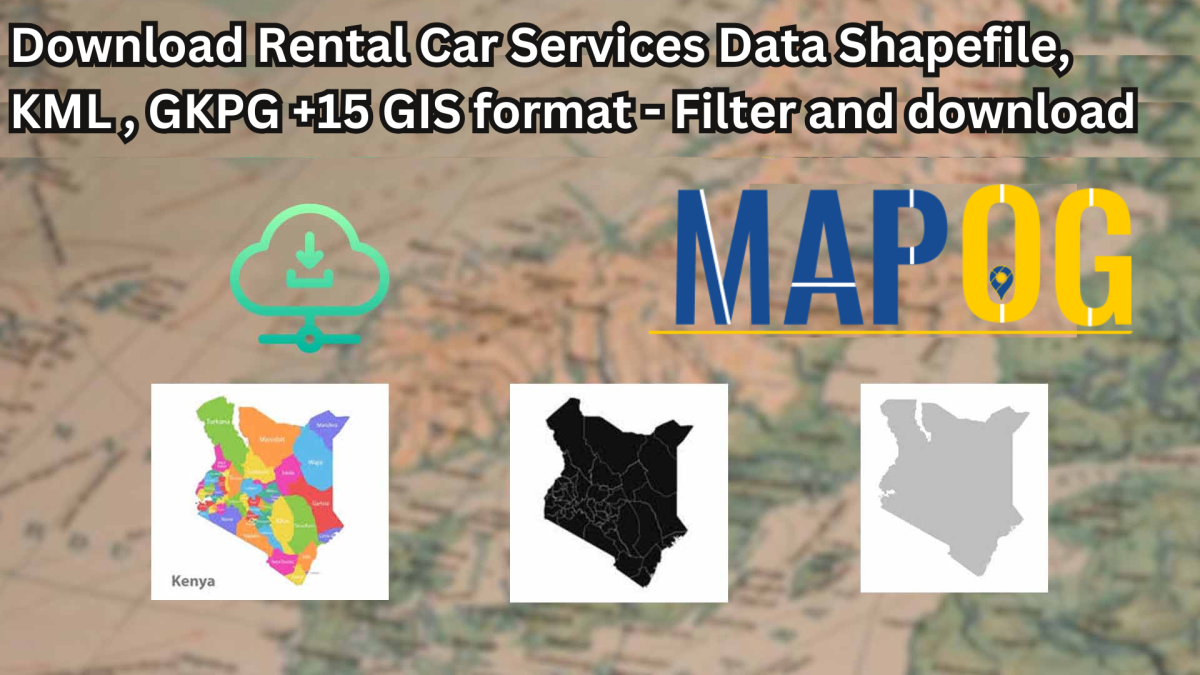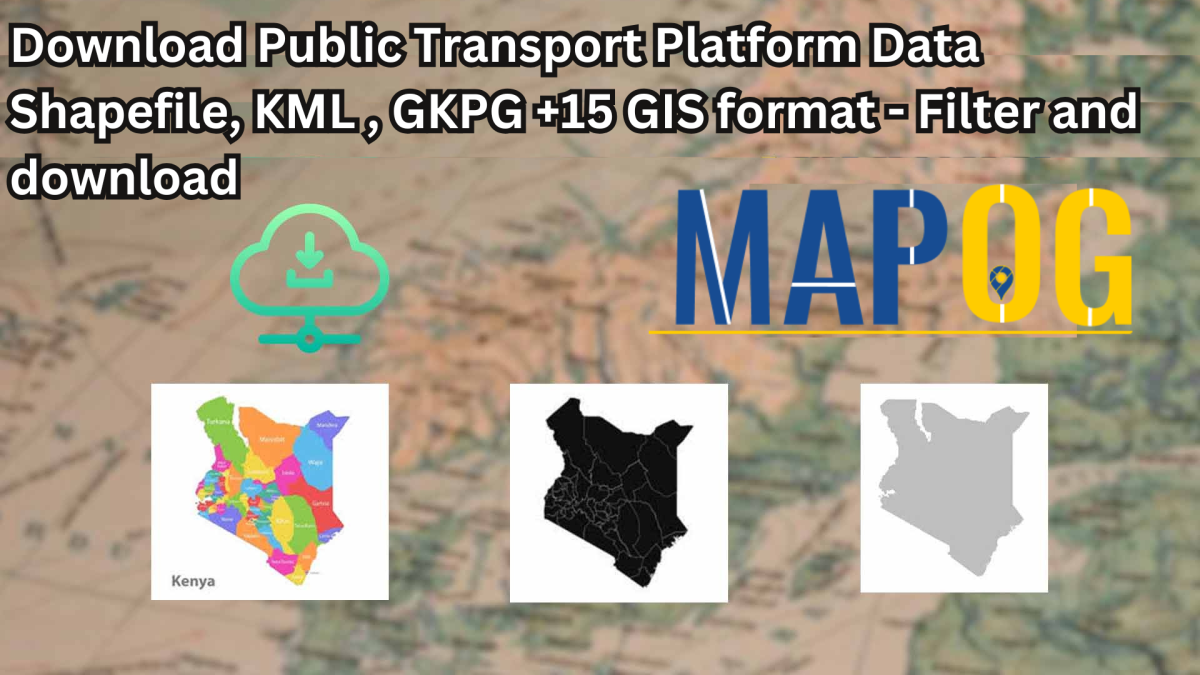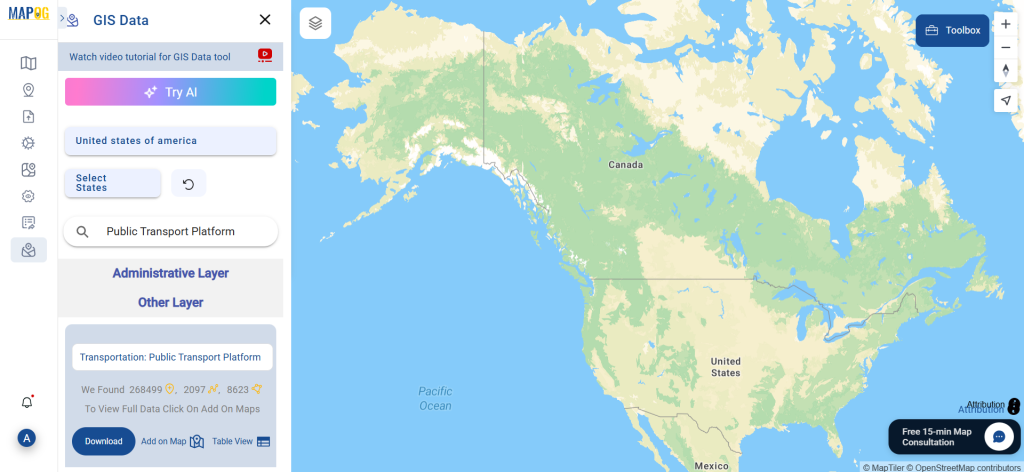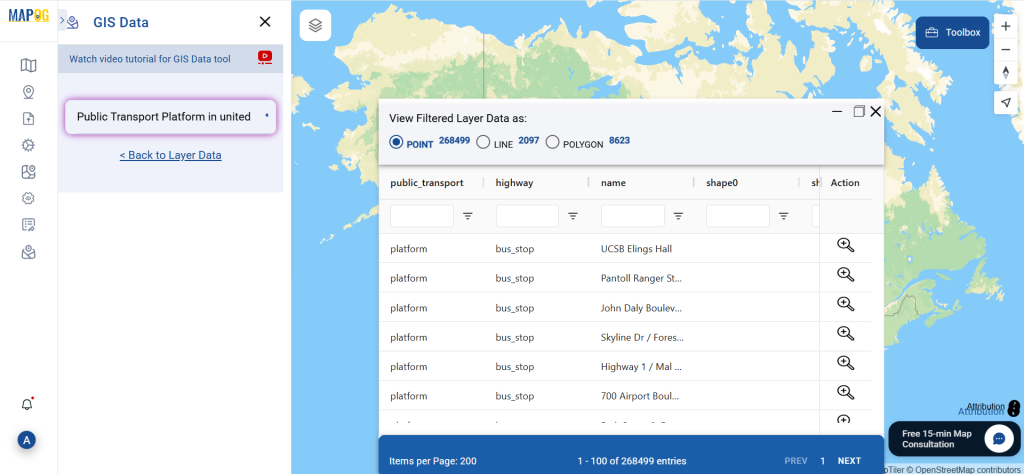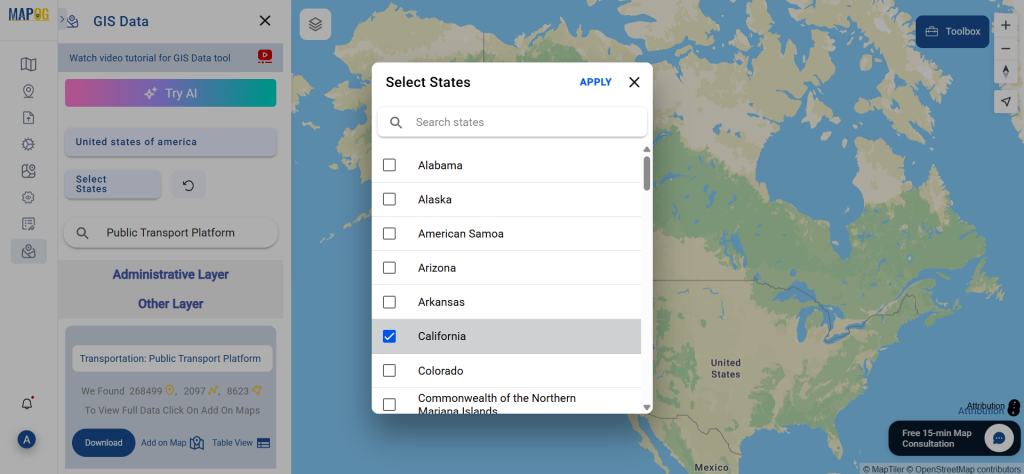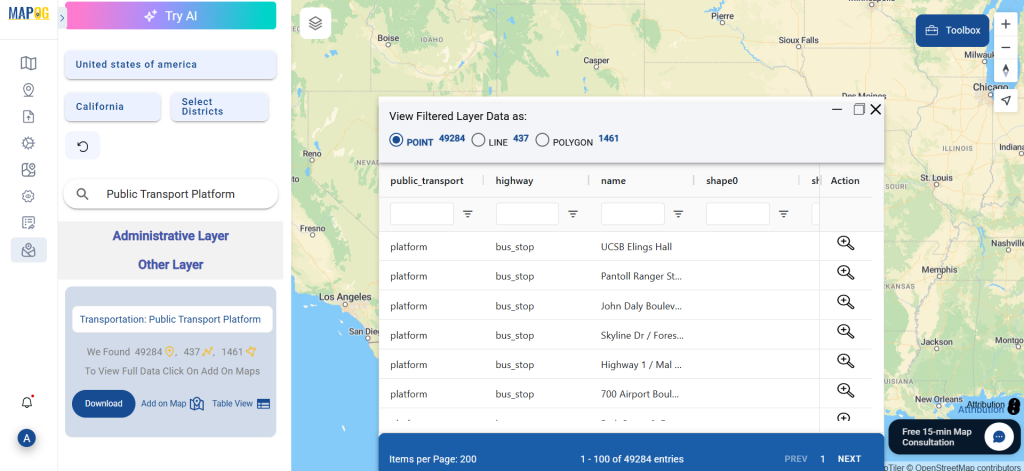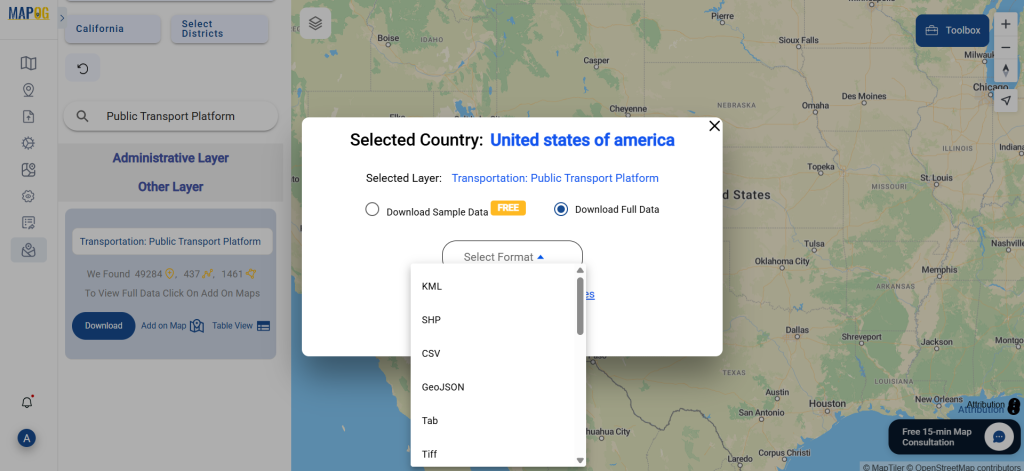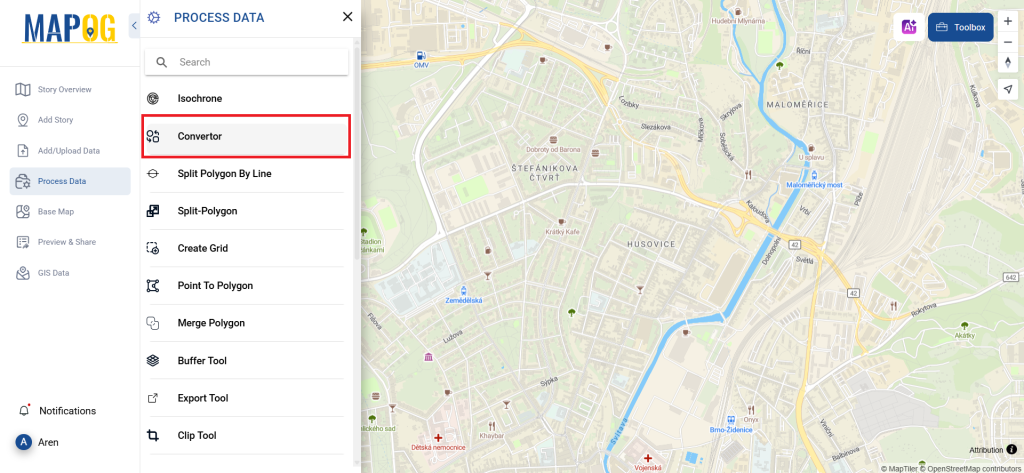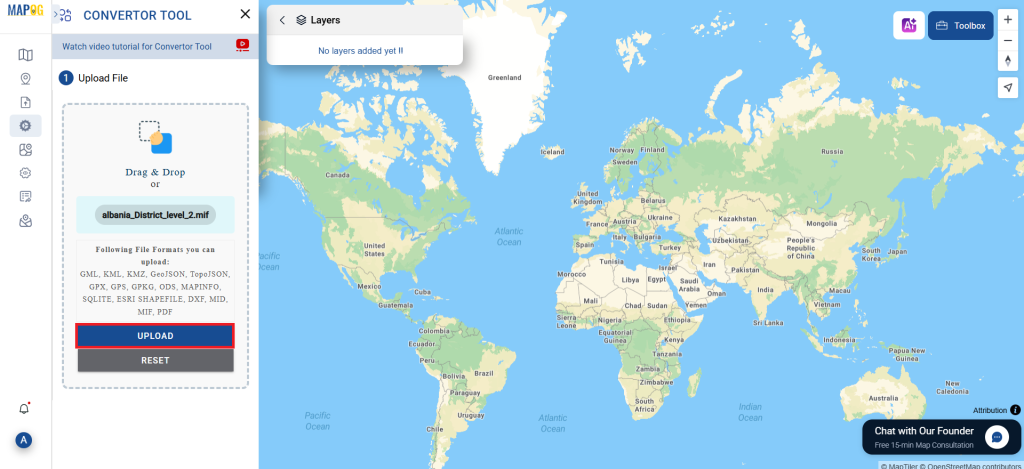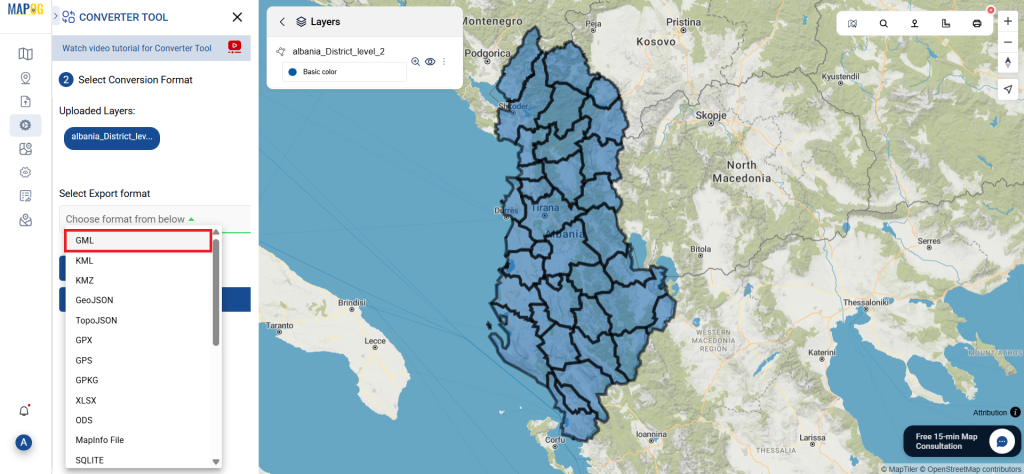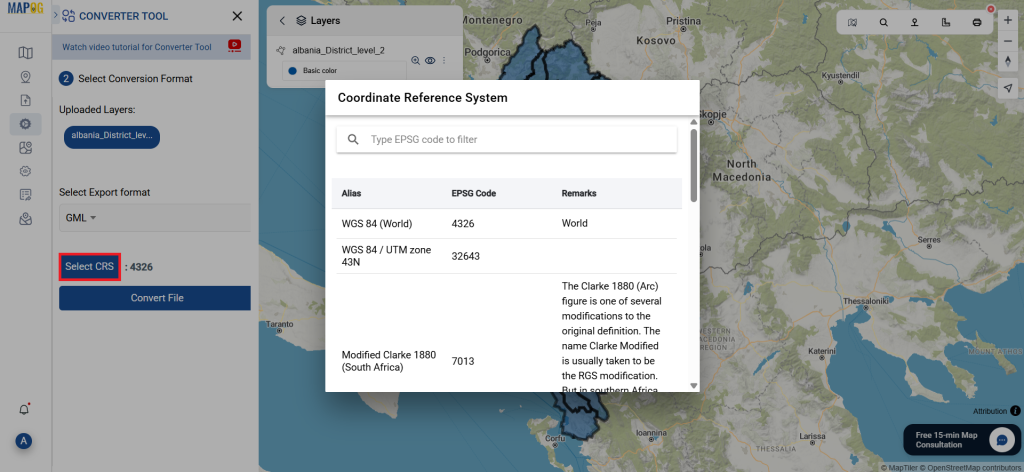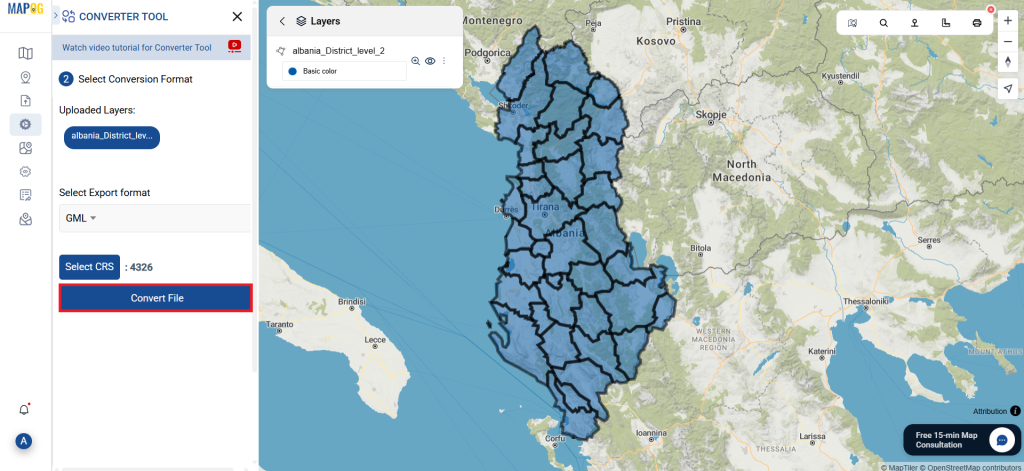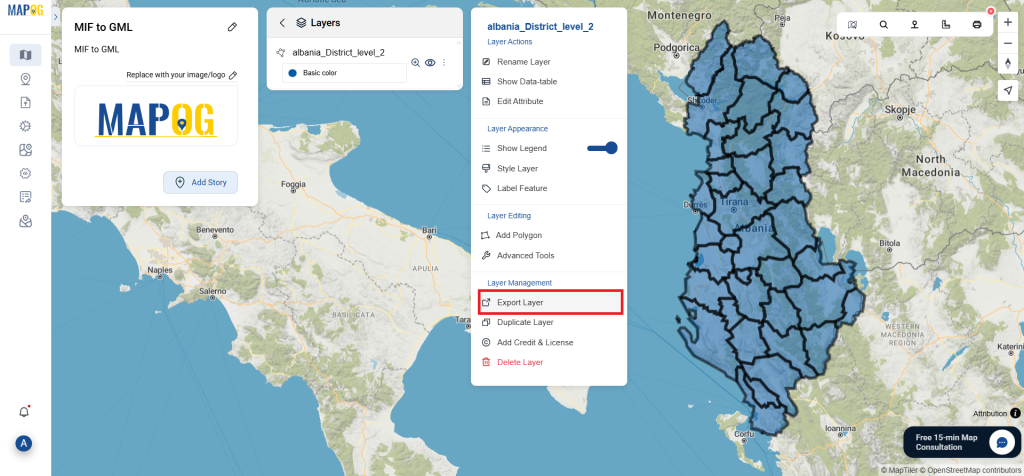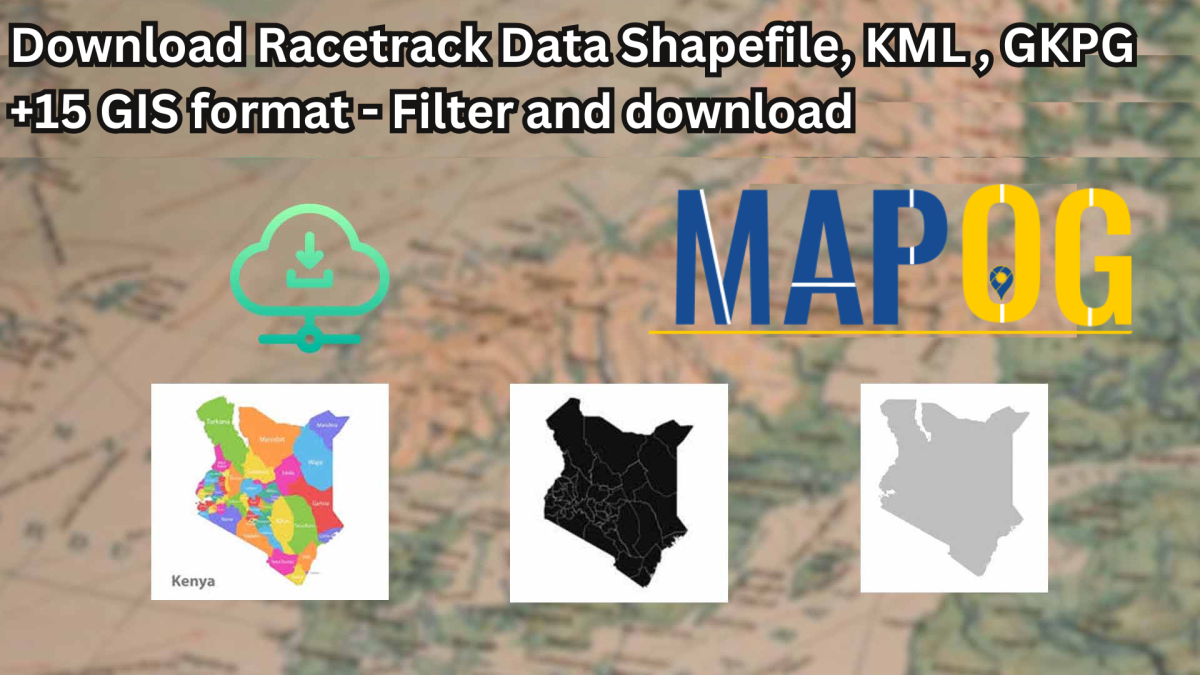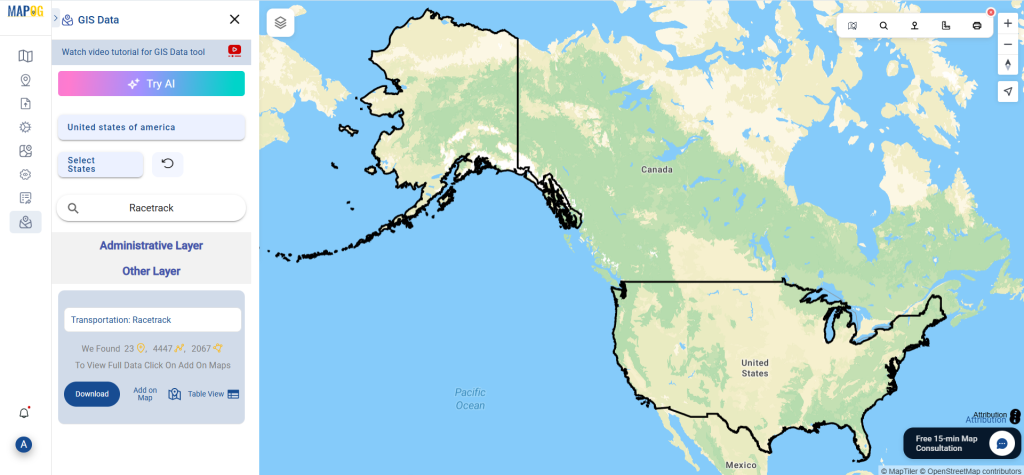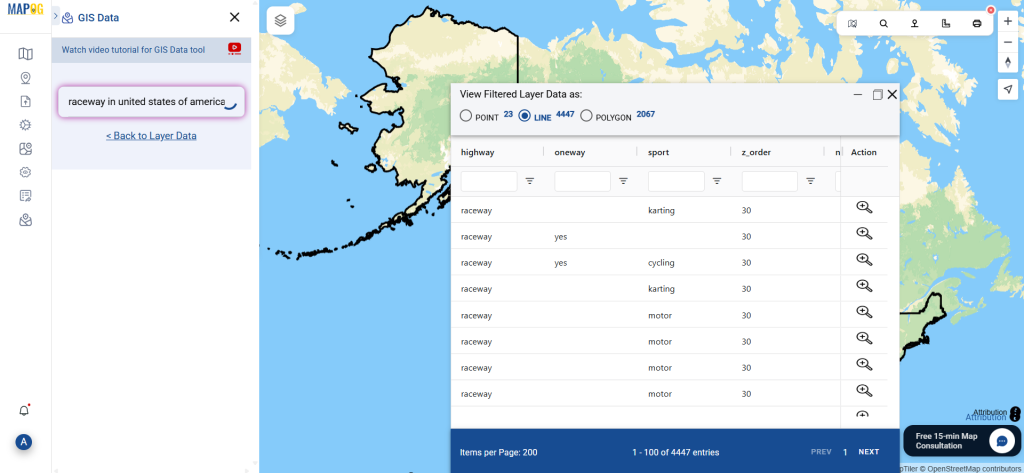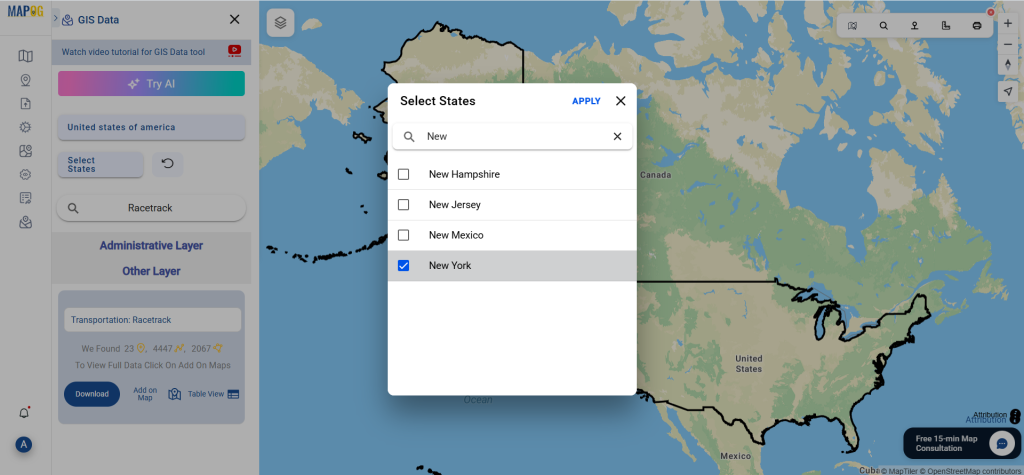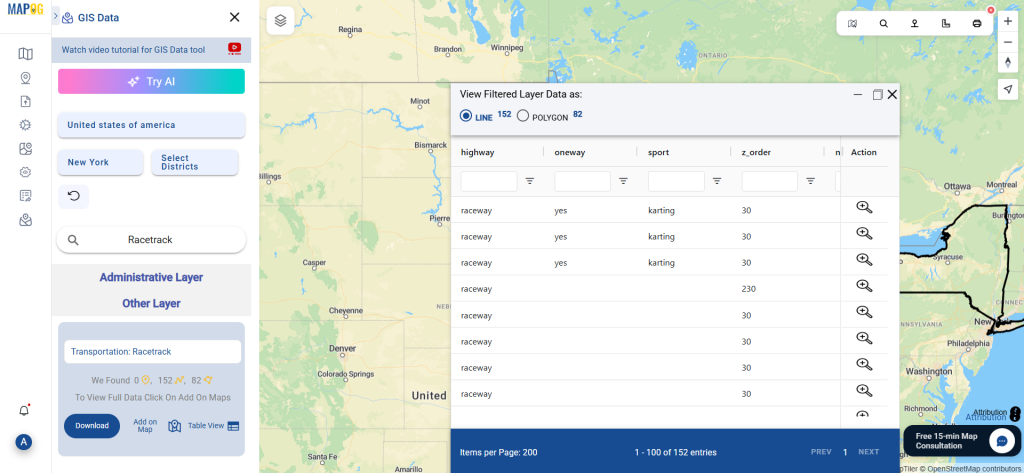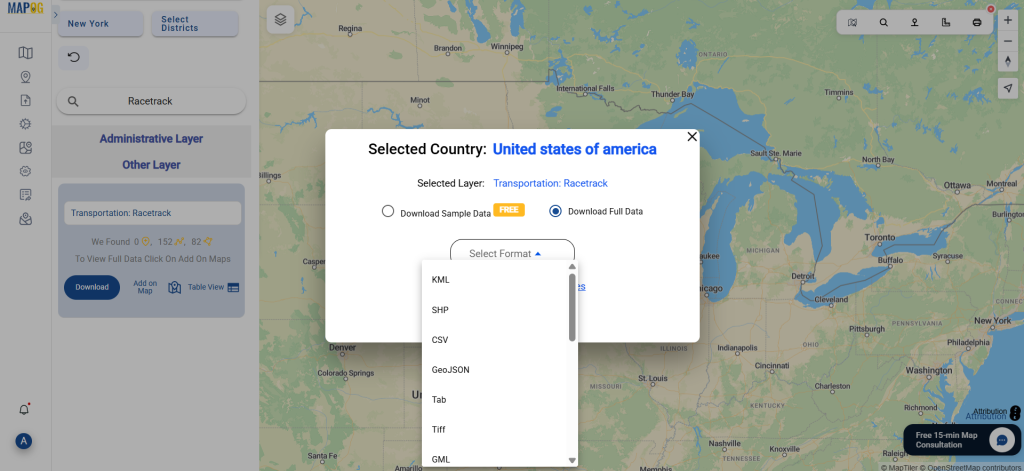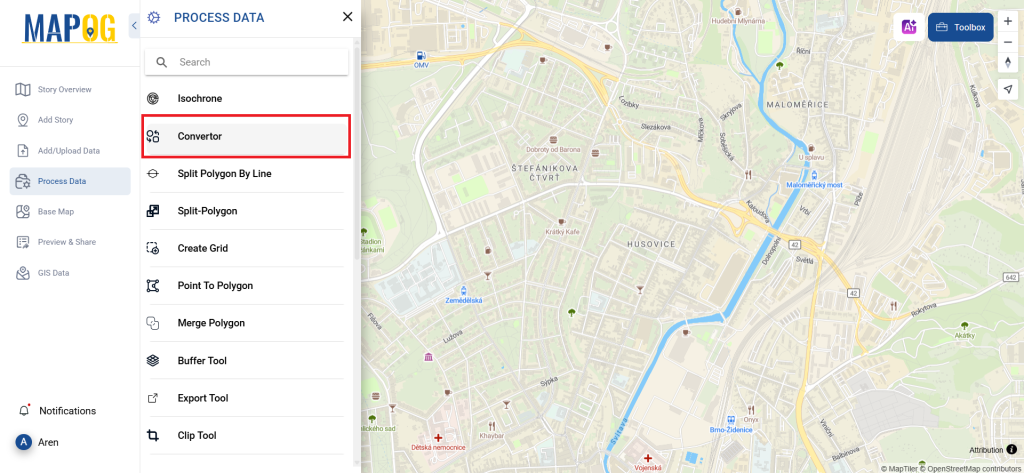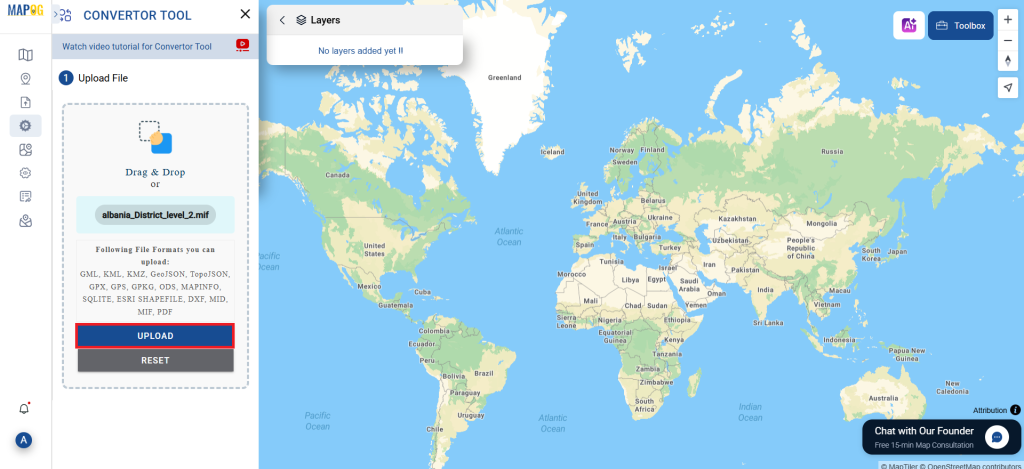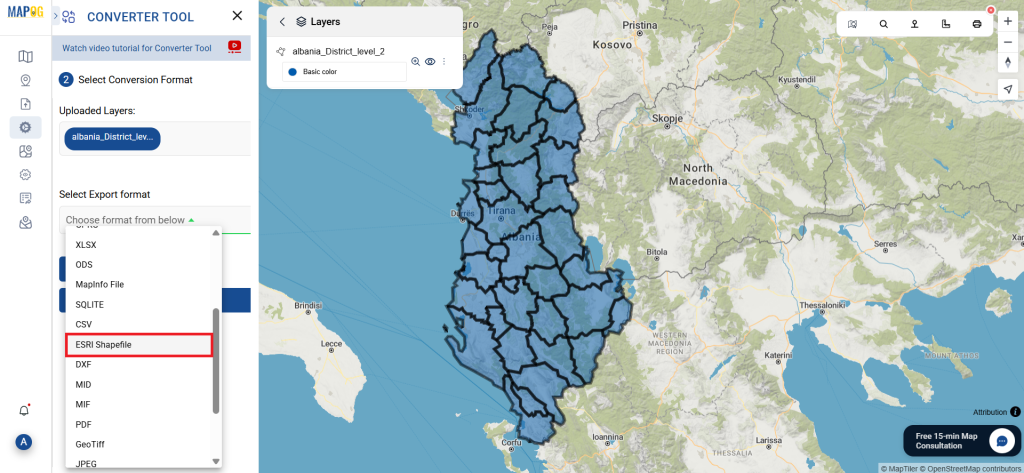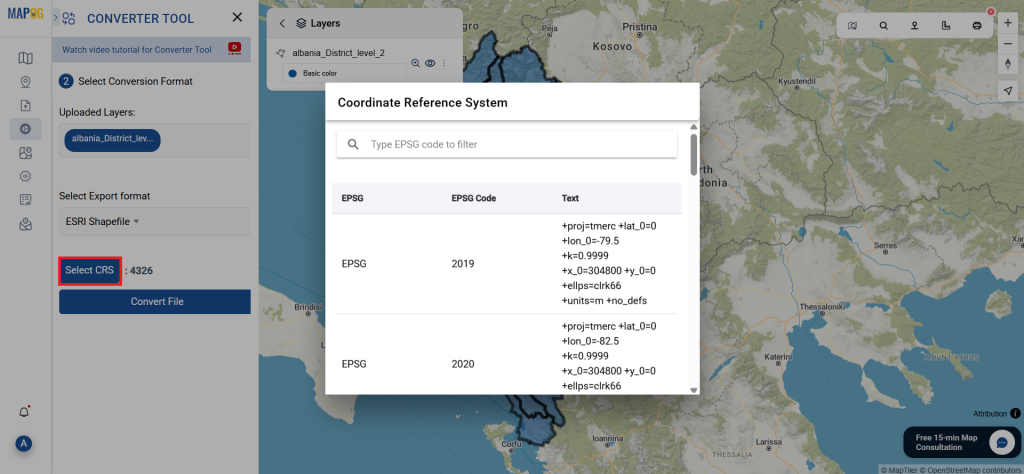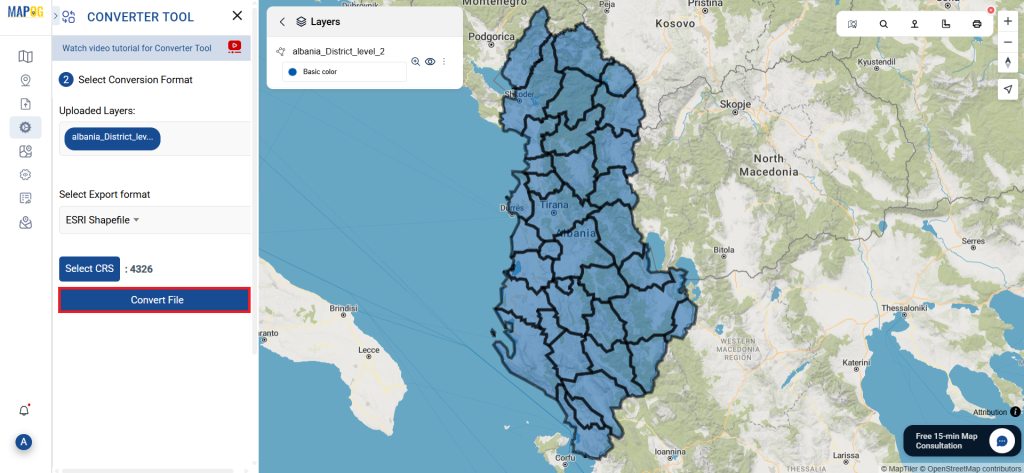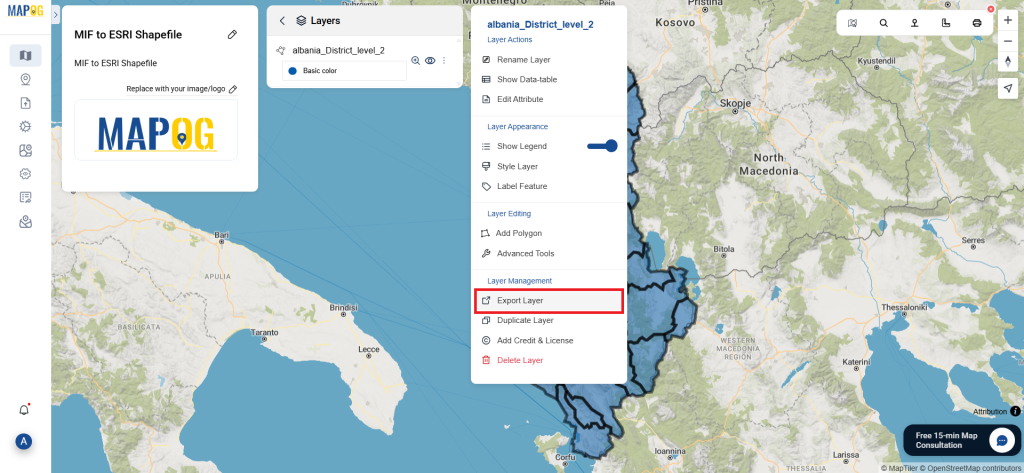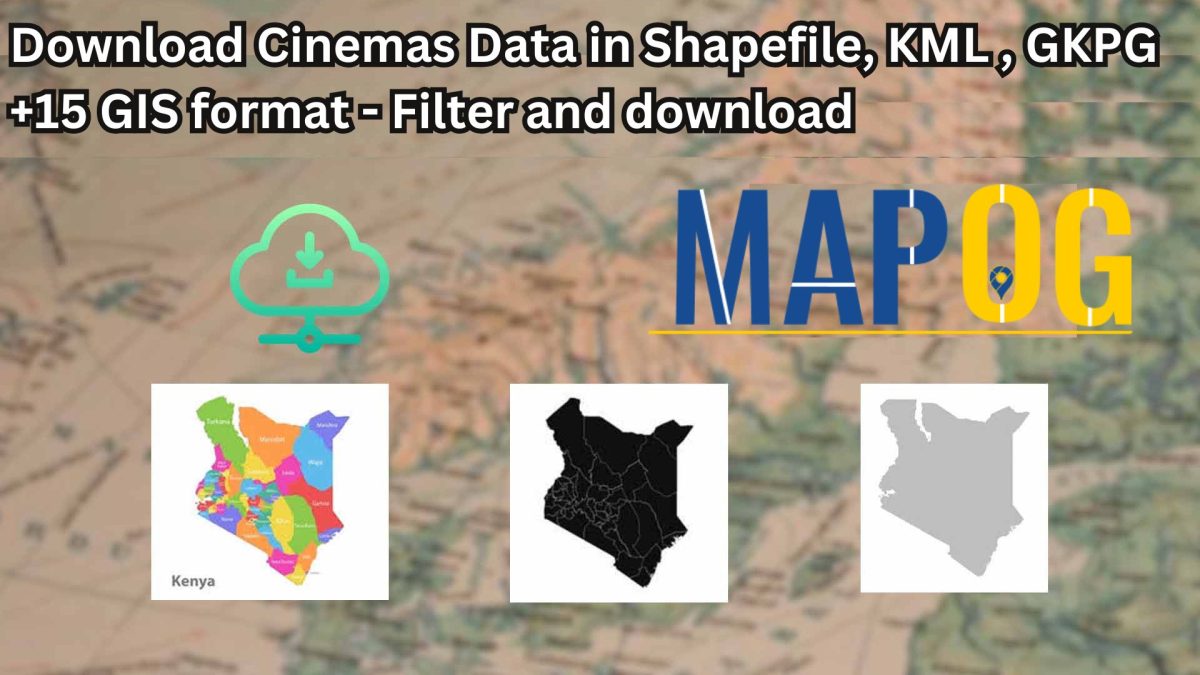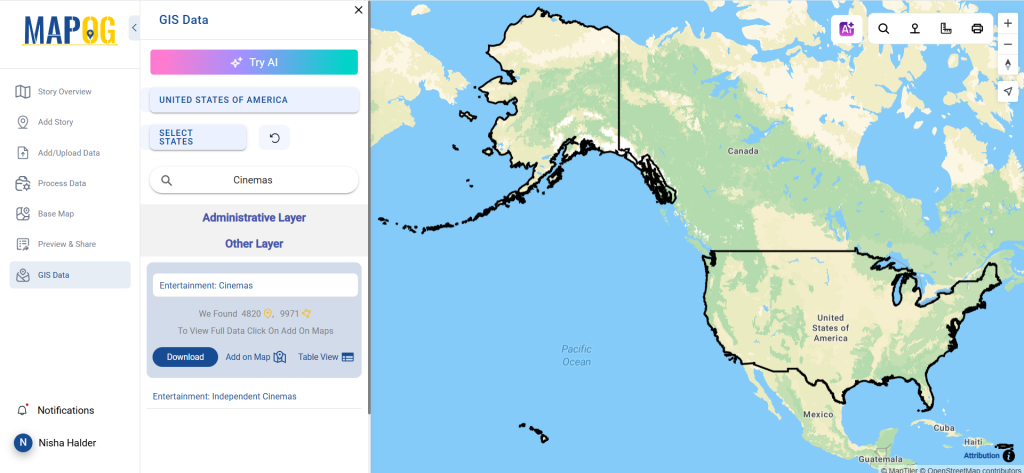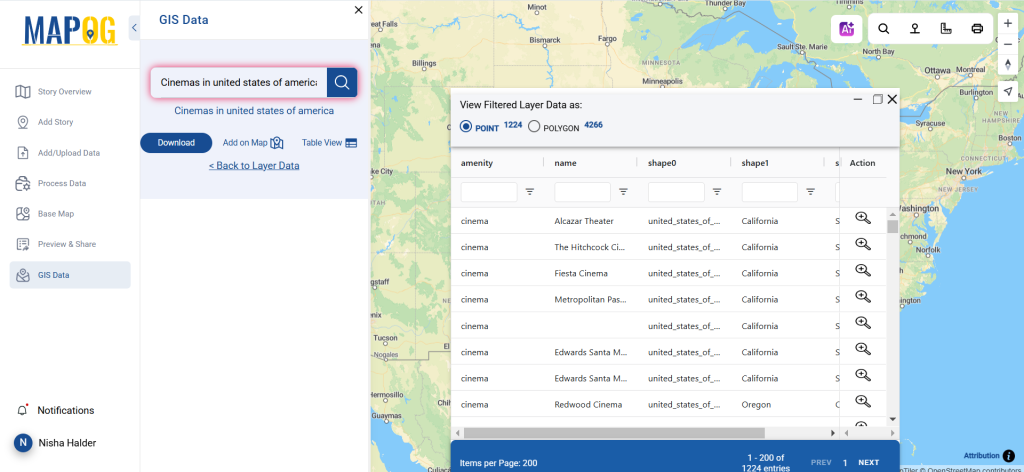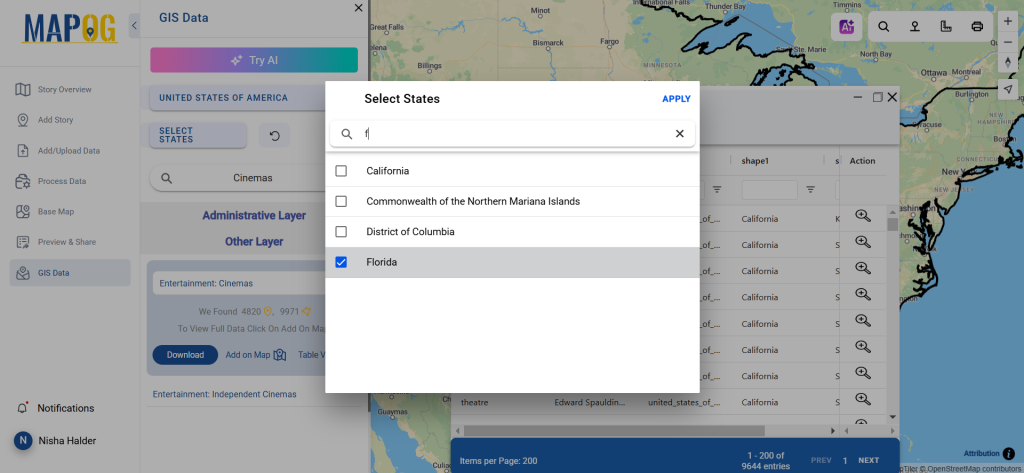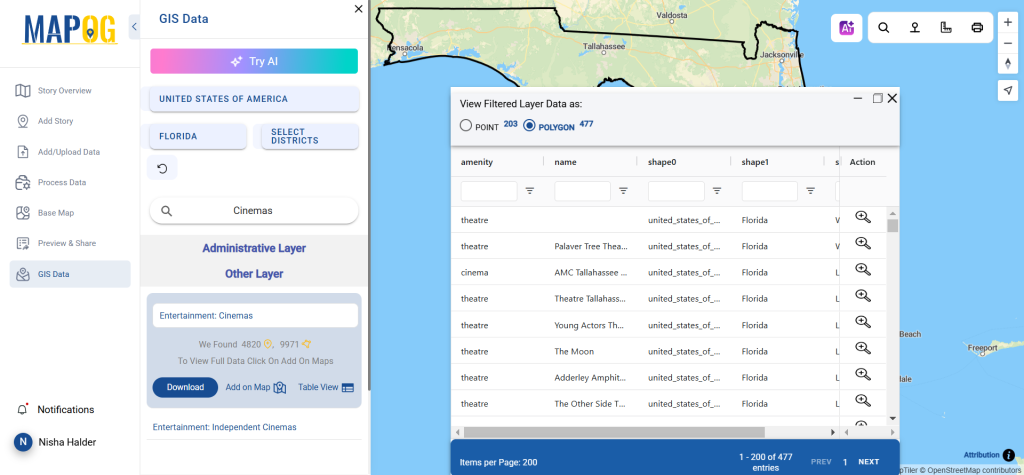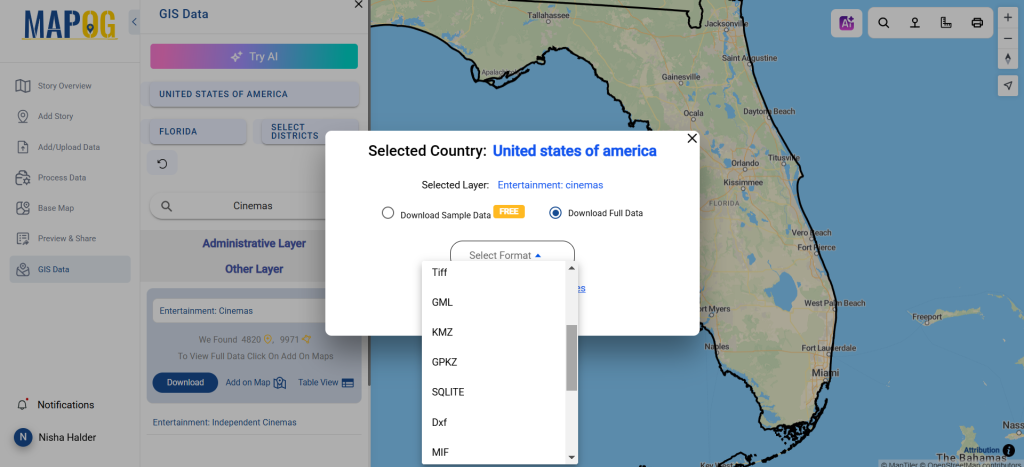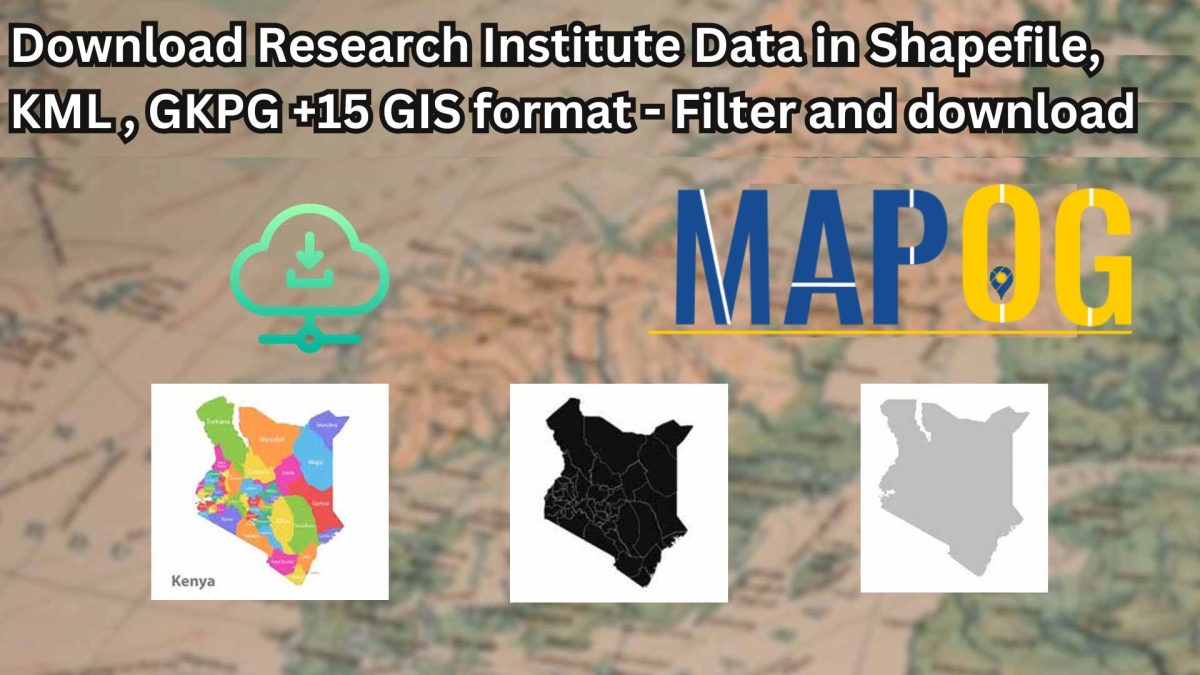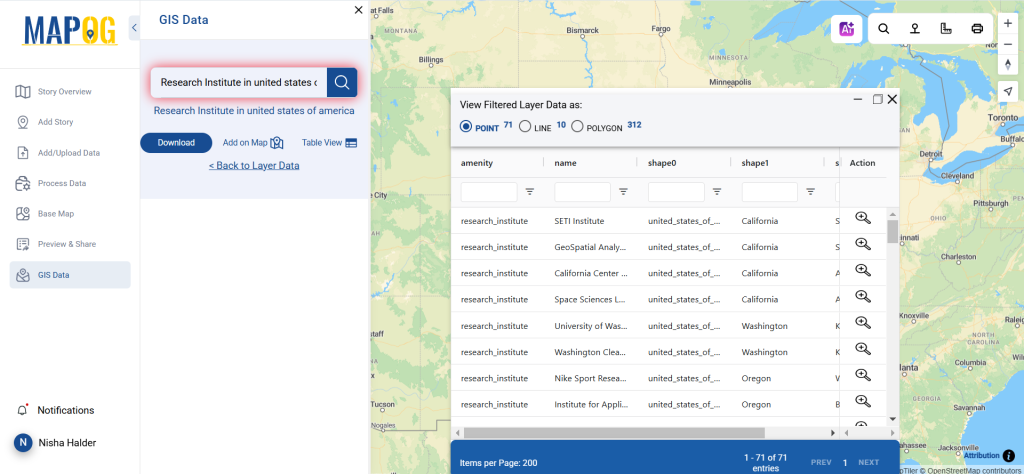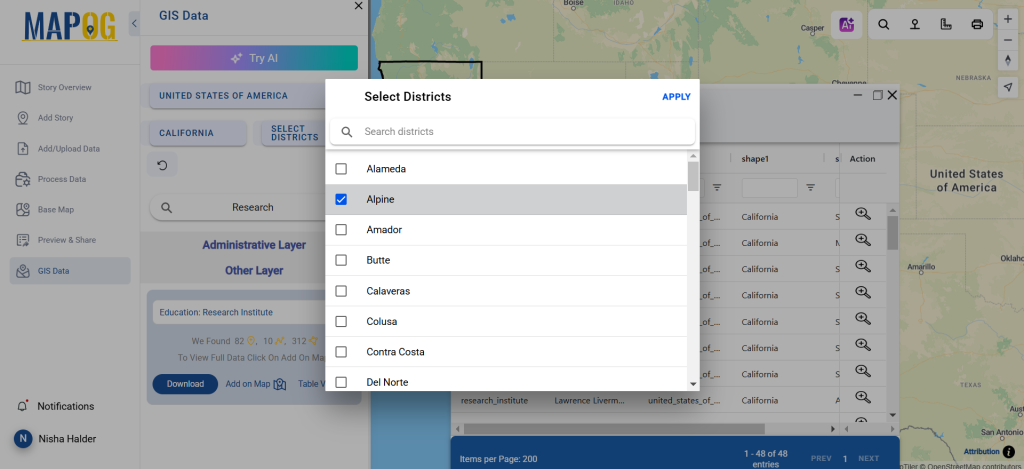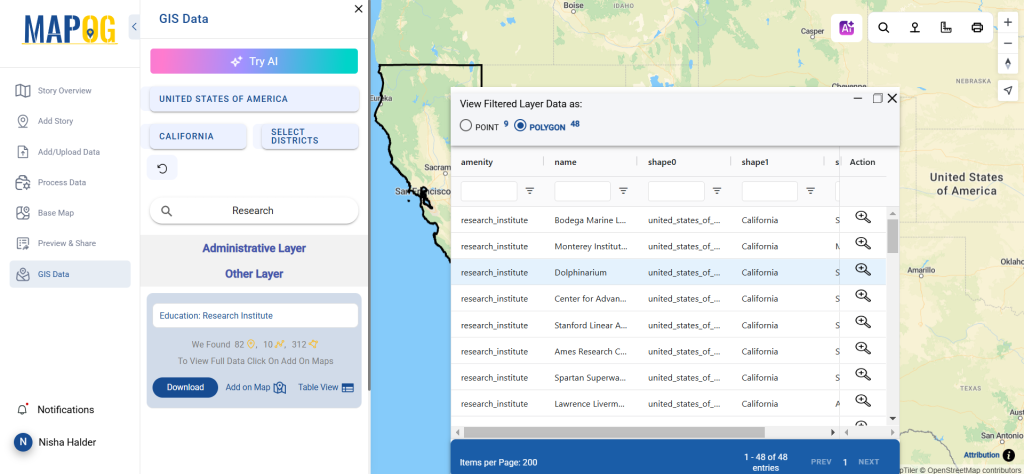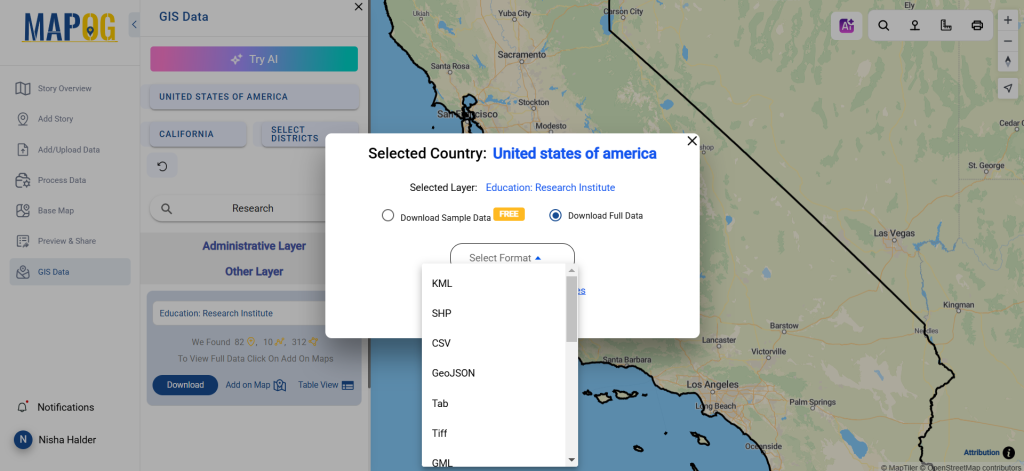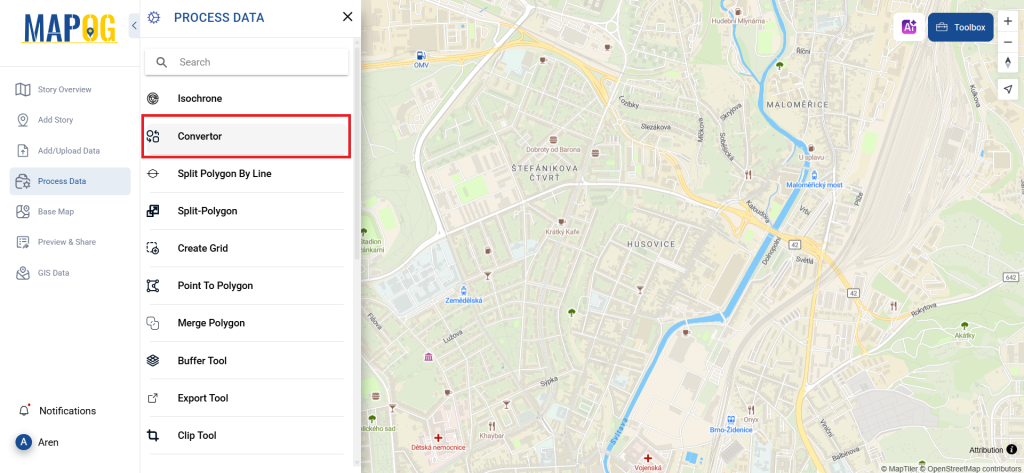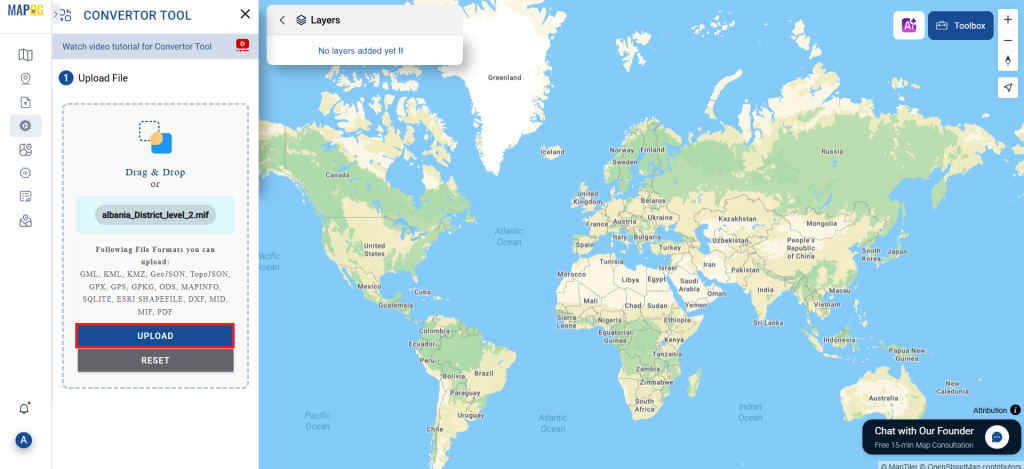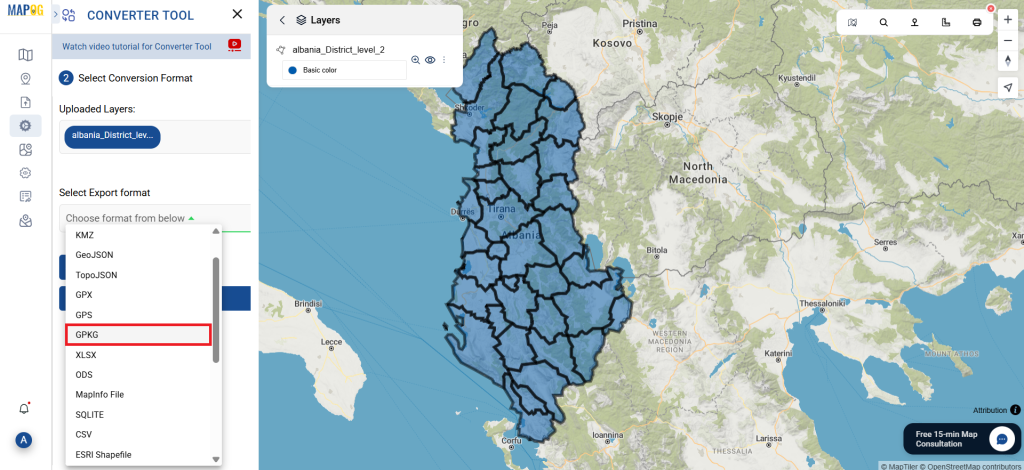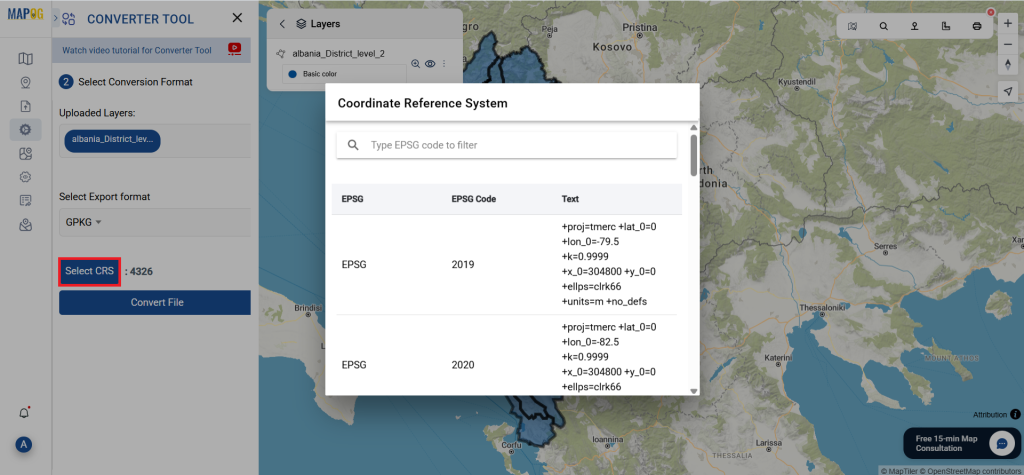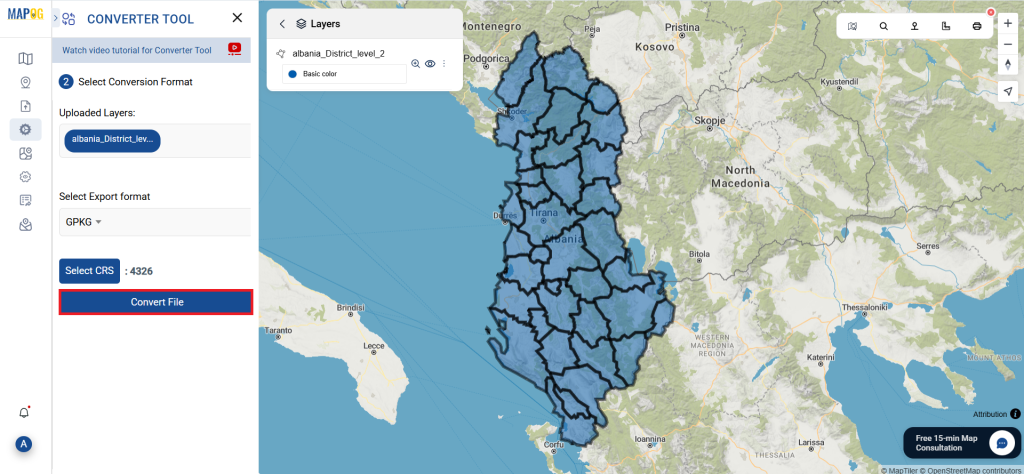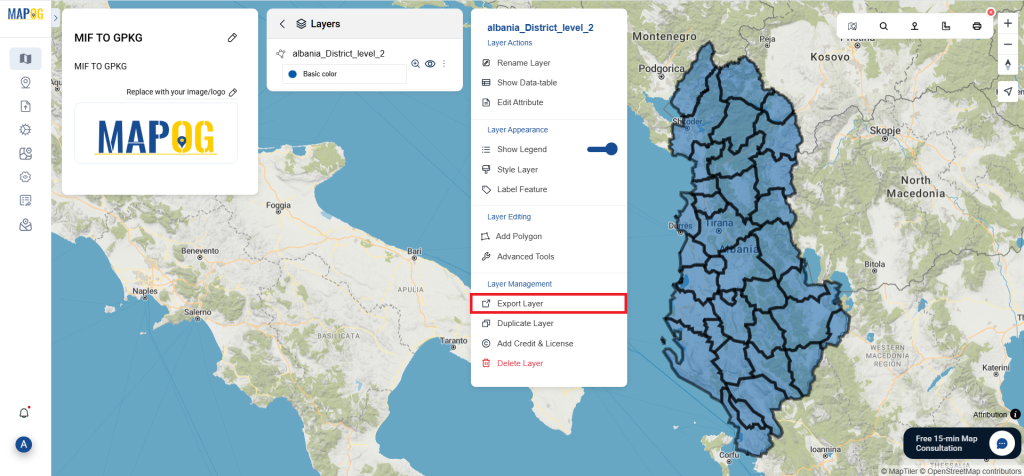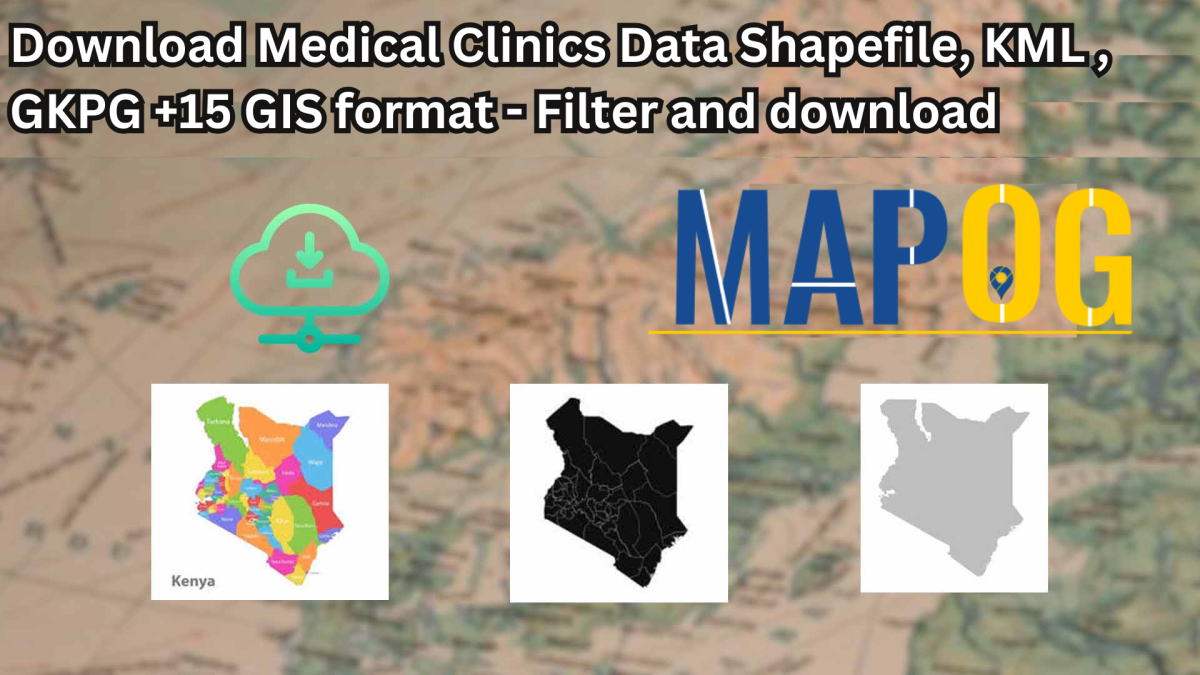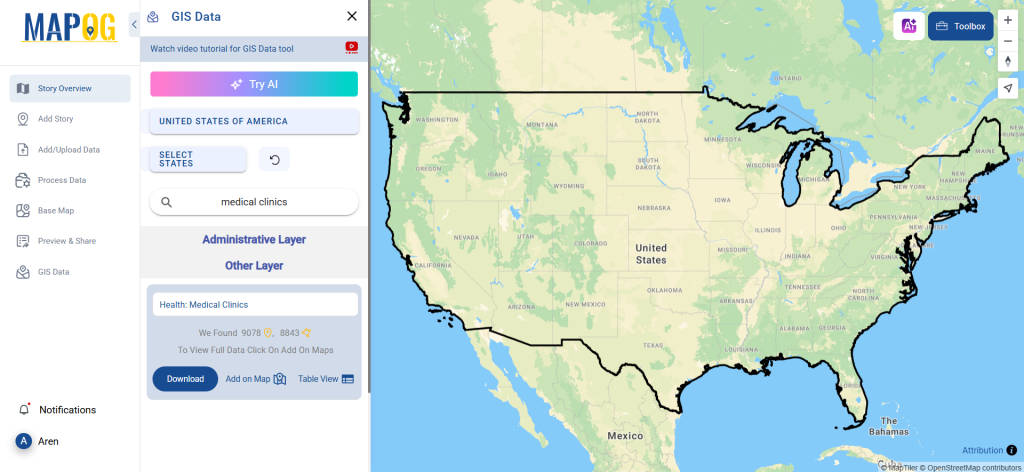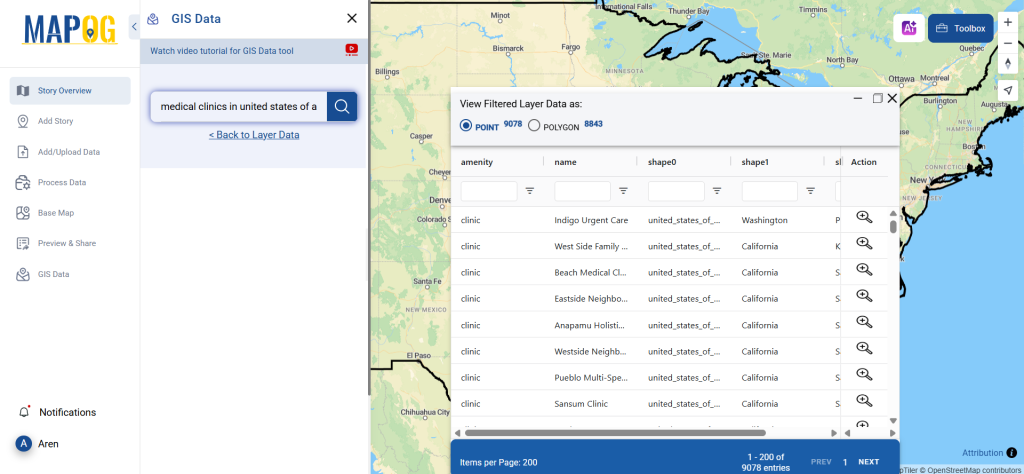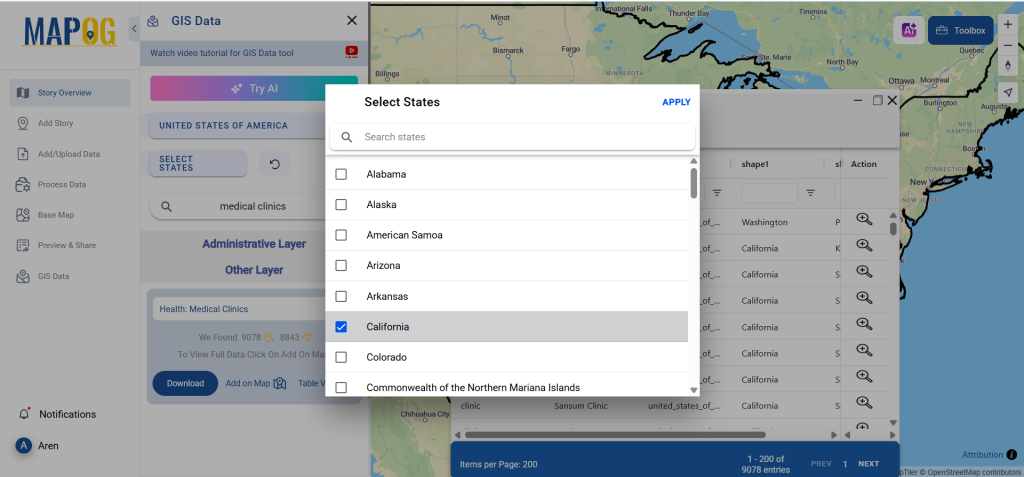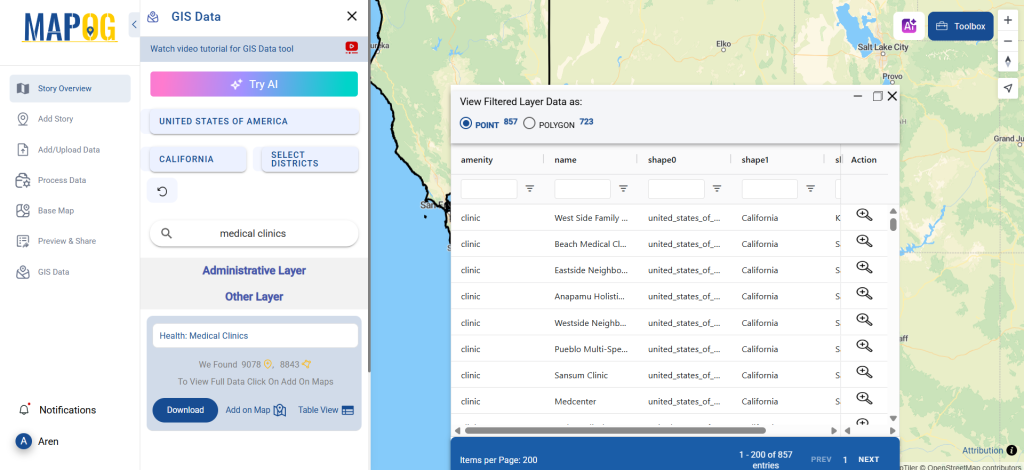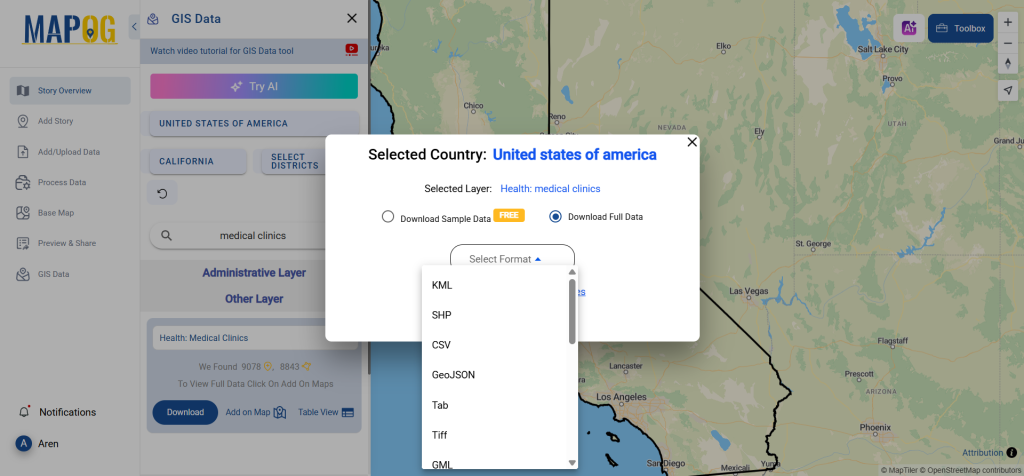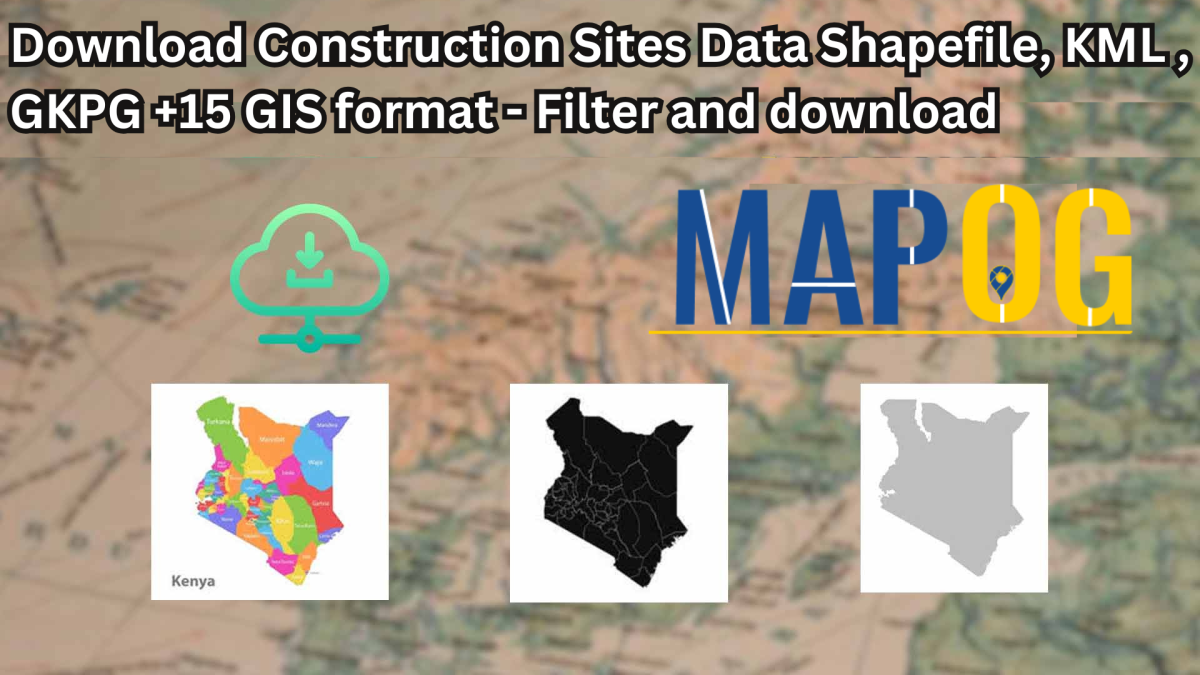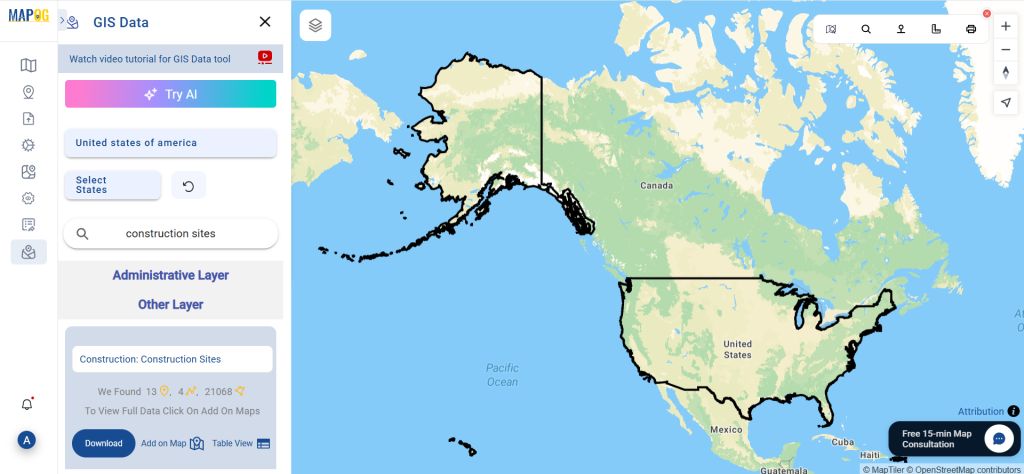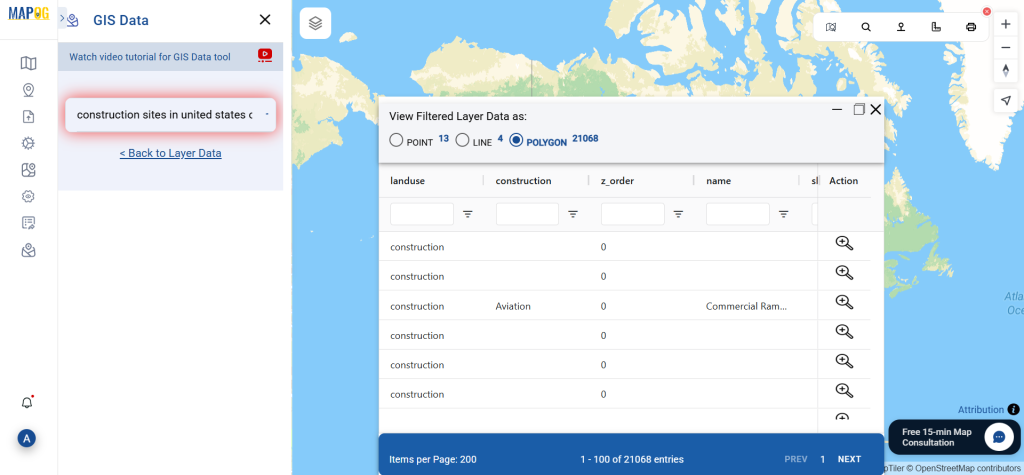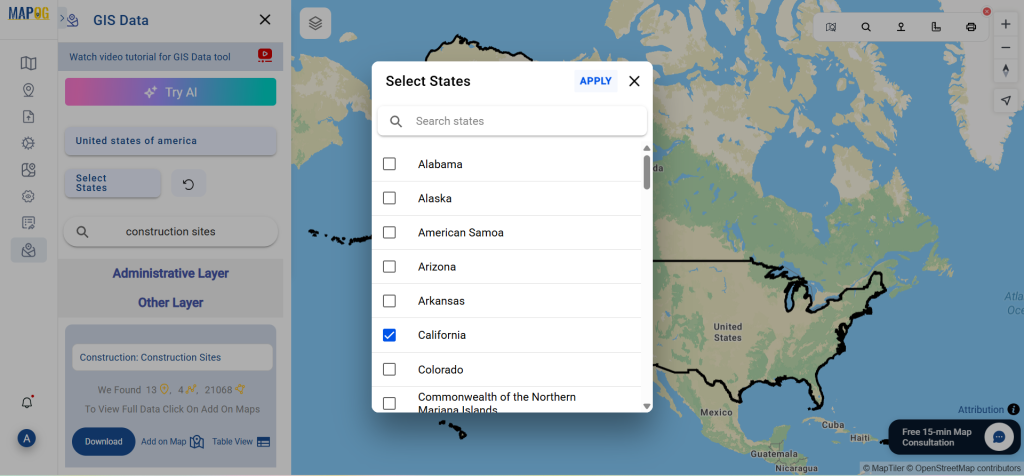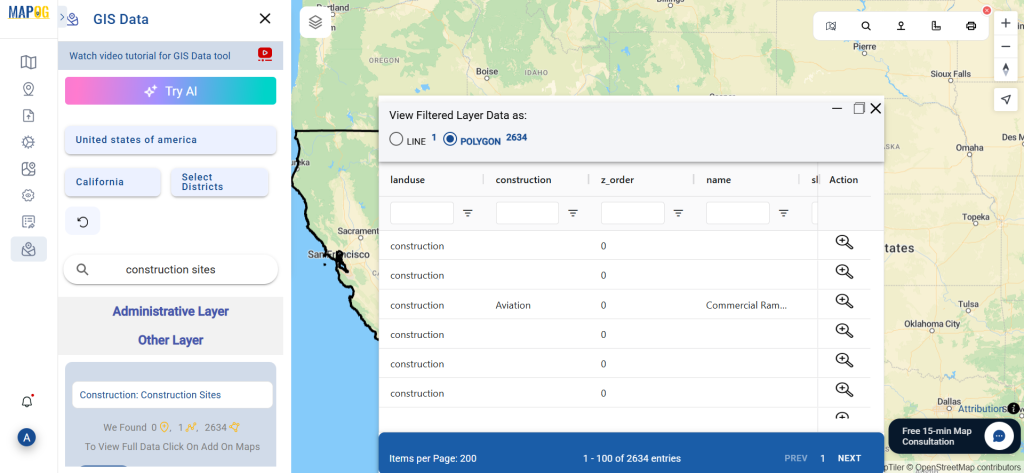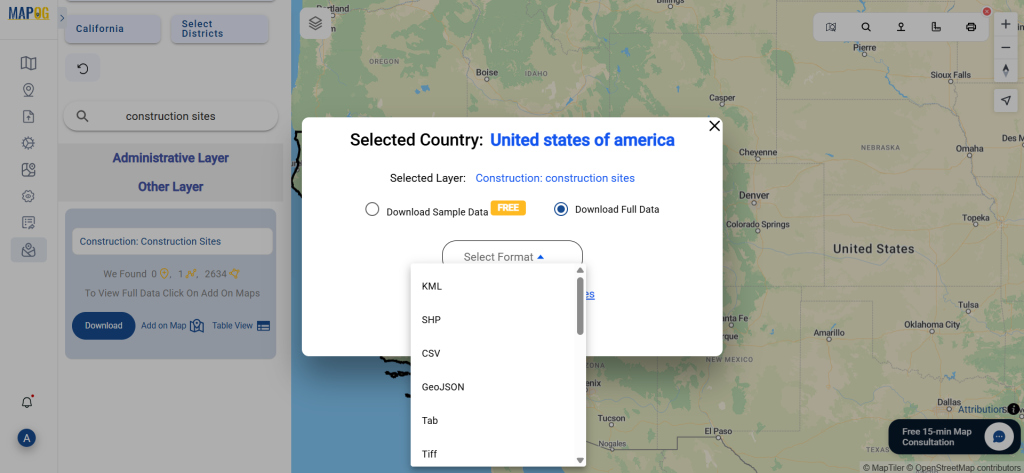Need accurate and ready-to-use rental car services data? Download Rental Car Services Data effortlessly with GIS Data by MAPOG—a powerful and intuitive platform that supports more than 15 GIS formats including Shapefile, KML, GeoJSON, and MID. Whether you’re working on transportation planning, urban mobility studies, or commercial mapping projects, this platform gives you access to structured, updated geographic datasets for seamless integration and analysis.
How to Download Rental Car Services Data
GIS Data by MAPOG simplifies the entire process, offering easy access to rental car service layers across thousands of locations. Supporting a wide range of export formats—such as SHP, KML, CSV, MID, GeoJSON, SQL, DXF, MIF, TOPOJSON, and GPX—the platform ensures compatibility across all major GIS tools, whether desktop or web-based.
Download Rental Car Services Data of any countries
Note:
- All data is provided in GCS datum EPSG:4326 WGS84 CRS (Coordinate Reference System).
- Users need to log in to access and download their preferred data formats.
Step-by-Step Guide to Download Rental Car Services Data
Step 1: Search for Rental Car Services Data
Start by selecting your area of interest within the MAPOG platform. Use the search tool and type “Rental Car Services Data” to view relevant datasets. Check the attributes to confirm whether the layer consists of points or polygons, depending on how the data is mapped.
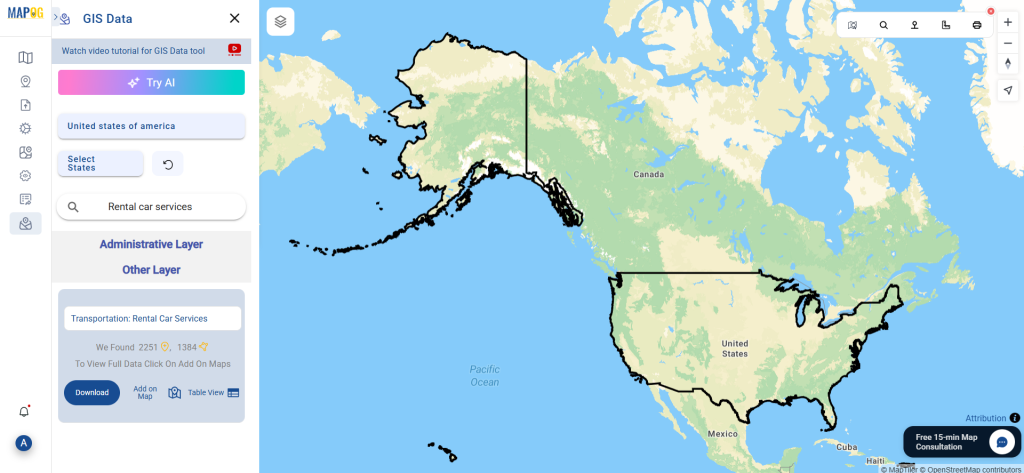
Step 2: Use the AI-Powered Search
Leverage the “Try AI” option to make your search smarter and faster. Simply enter keywords like “rental car pickup points” or “car hire zones,” and MAPOG’s AI engine fetches datasets that match your needs instantly.
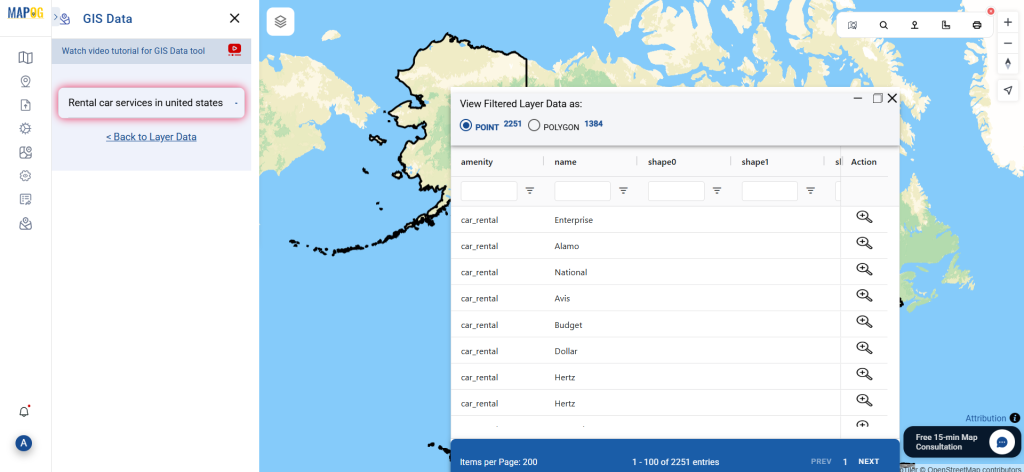
Step 3: Apply State and District Filters
The Filter Data option allows you to narrow down data results based on specific states and districts. If your dataset spans a large region, this tool becomes crucial in zooming into local-level insights, making your maps more actionable and detailed.
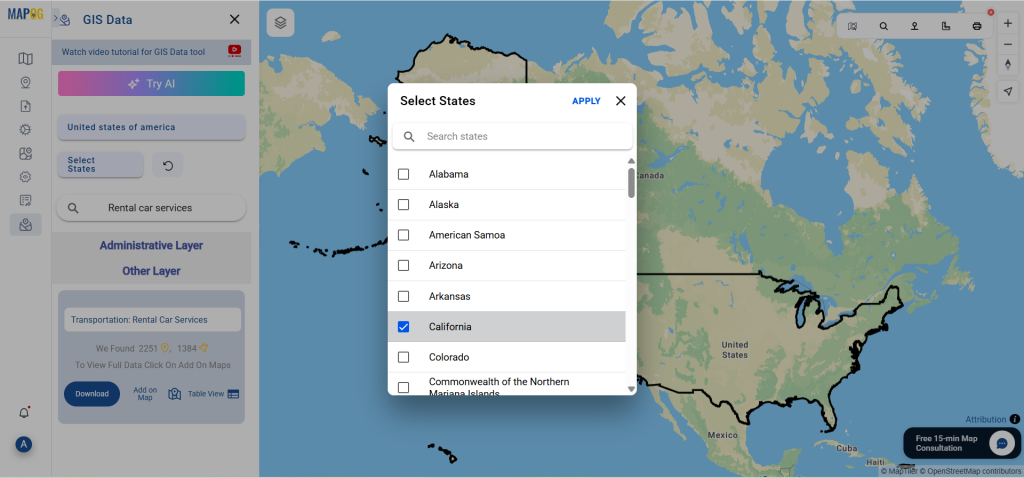
Step 4: Visualize with ‘Add on Map’
By clicking “Add on Map,” users can overlay selected rental car service data onto the analysis interface. This interactive feature enables users to inspect spatial distribution, analyze service density, and explore urban mobility flows in real time.
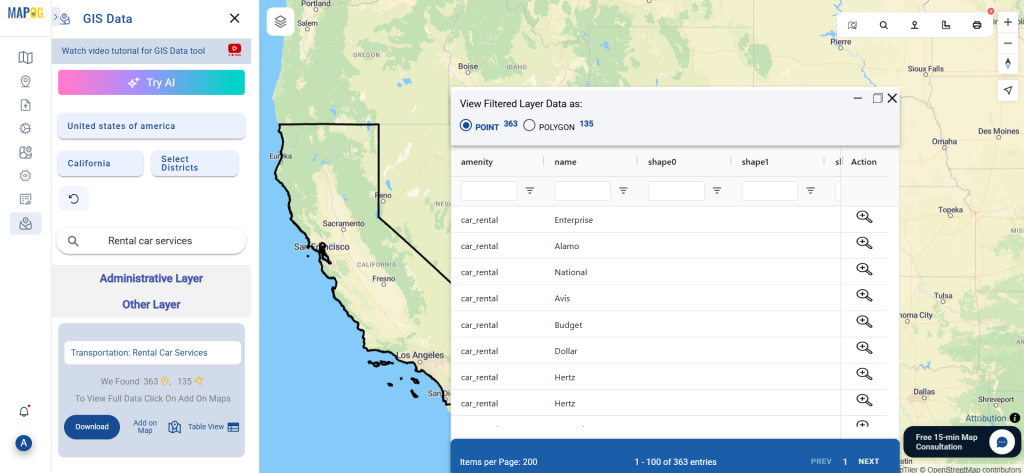
Step 5: Download the Data in Your Preferred Format
Once satisfied, click “Download Data.” You can choose a sample or complete dataset. Select the desired format—whether it’s Shapefile, KML, MID, or any other supported option—agree to the terms, and proceed to download.
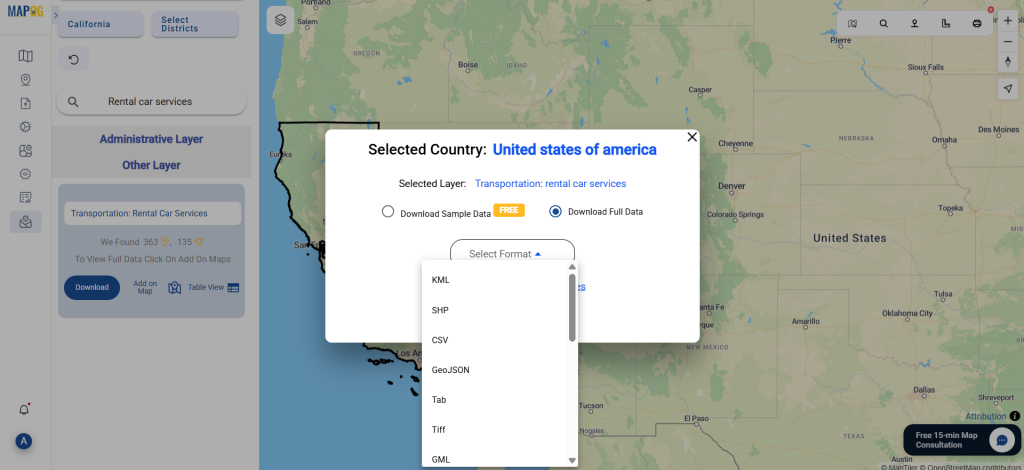
Final Thoughts
Download Rental Car Services Data in a format that fits your workflow with just a few clicks. Thanks to MAPOG’s extensive format support and built-in analytical features, professionals and GIS enthusiasts can gain deep insights into car rental networks and urban mobility patterns. If your goal is to map, plan, or research ground transportation services, GIS Data by MAPOG is the gateway to smarter, data-driven outcomes.
With MAPOG’s versatile toolkit, you can effortlessly upload vector and upload Excel or CSV data, incorporate existing layers, perform polyline splitting, use the converter for various formats, calculate isochrones, and utilize the Export Tool.
For any questions or further assistance, feel free to reach out to us at support@mapog.com. We’re here to help you make the most of your GIS data.
Download Shapefile for the following:
- World Countries Shapefile
- Australia
- Argentina
- Austria
- Belgium
- Brazil
- Canada
- Denmark
- Fiji
- Finland
- Germany
- Greece
- India
- Indonesia
- Ireland
- Italy
- Japan
- Kenya
- Lebanon
- Madagascar
- Malaysia
- Mexico
- Mongolia
- Netherlands
- New Zealand
- Nigeria
- Papua New Guinea
- Philippines
- Poland
- Russia
- Singapore
- South Africa
- South Korea
- Spain
- Switzerland
- Tunisia
- United Kingdom Shapefile
- United States of America
- Vietnam
- Croatia
- Chile
- Norway
- Maldives
- Bhutan
- Colombia
- Libya
- Comoros
- Hungary
- Laos
- Estonia
- Iraq
- Portugal
- Azerbaijan
- Macedonia
- Romania
- Peru
- Marshall Islands
- Slovenia
- Nauru
- Guatemala
- El Salvador
- Afghanistan
- Cyprus
- Syria
- Slovakia
- Luxembourg
- Jordan
- Armenia
- Haiti And Dominican Republic
- Malta
- Djibouti
- East Timor
- Micronesia
- Morocco
- Liberia
- Kosovo
- Isle Of Man
- Paraguay
- Tokelau
- Palau
- Ile De Clipperton
- Mauritius
- Equatorial Guinea
- Tonga
- Myanmar
- Thailand
- New Caledonia
- Niger
- Nicaragua
- Pakistan
- Nepal
- Seychelles
- Democratic Republic of the Congo
- China
- Kenya
- Kyrgyzstan
- Bosnia Herzegovina
- Burkina Faso
- Canary Island
- Togo
- Israel And Palestine
- Algeria
- Suriname
- Angola
- Cape Verde
- Liechtenstein
- Taiwan
- Turkmenistan
- Tuvalu
- Ivory Coast
- Moldova
- Somalia
- Belize
- Swaziland
- Solomon Islands
- North Korea
- Sao Tome And Principe
- Guyana
- Serbia
- Senegal And Gambia
- Faroe Islands
- Guernsey Jersey
- Monaco
- Tajikistan
- Pitcairn
Disclaimer : The GIS data provided for download in this article was initially sourced from OpenStreetMap (OSM) and further modified to enhance its usability. Please note that the original data is licensed under the Open Database License (ODbL) by the OpenStreetMap contributors. While modifications have been made to improve the data, any use, redistribution, or modification of this data must comply with the ODbL license terms. For more information on the ODbL, please visit OpenStreetMap’s License Page.
Here are some blogs you might be interested in:
- Download Airport data in Shapefile, KML , MIf +15 GIS format – Filter and download
- Download Bank Data in Shapefile, KML, GeoJSON, and More – Filter and Download
- Download Railway data in Shapefile, KML, GeojSON +15 GIS format
- Download Farmland Data in Shapefile, KML, GeoJSON, and More – Filter and Download
- Download Pharmacy Data in Shapefile, KML, GeoJSON, and More – Filter and Download
- Download ATM Data in Shapefile, KML, MID +15 GIS Formats Using GIS Data by MAPOG
- Download Road Data in Shapefile, KML, GeoJSON, and 15+ GIS Form
